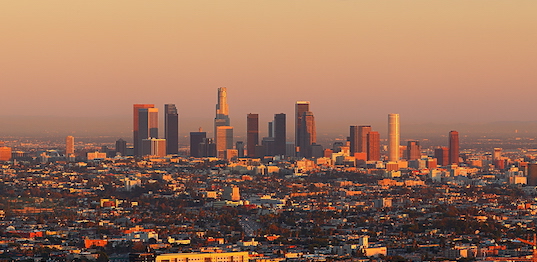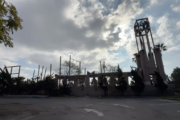The Southern Baptist Convention is turning its attention to race this month, with its policy arm changing the topic of its annual spring summit from bioethics to multiracial churches. The move revealed that even the United States’ most conservative denominations have taken notice of the thousands of people who protested in the streets after the acquittals of police officers in the deaths of unarmed black men in New York, Los Angeles and Ferguson.
But the announcement of the theme change, which was delivered at a luncheon in Nashville (a city that is 60 percent white and 30 percent black), also revealed how difficult it has been to integrate America’s “most segregated hour.” Only four of the 100 attendees at the luncheon were African-American.
Multiracial religious groups have been a consistent theme in conversations between CRCC researchers during the first months of Religious Competition and Creative Innovation project. The racial composition of a downtown church I recently visited is 40 percent Korean-American, 40 percent African-American, 10 to 15 percent Latino and 5 to 10 percent white. After describing the church to a colleague, I followed up with a tongue-in-check proclamation. “This is the only congregation in the history of global Christianity with this particular racial composition,” I said.
I was joking, but my colleague quickly responded, “That sounds close to what I saw at the church I visited yesterday.” In fact, there are dozens of churches with similar racial make-ups throughout Los Angeles.
Sociologists have thoroughly studied multiracial, Protestant congregations in the United States, but nearly all of the research has focused on congregations where whites have been the majority racial group or first minority. In Southern California, though, the most diverse region in the country, white worshipers may represent the third or fourth largest racial group in a congregation, or they might not be present at all. Studying these sorts of churches has the potential to broaden the way sociologists think about multiracial churches and opens avenues for future research.
For example, sociologists Ryon Cobb, Samuel Perry and Kevin Dougherty recently used data from General Social Surveys and National Congregations Studies to argue that “multiracial congregations leave dominant White racial frames unchallenged, potentially influencing minority attendees to embrace such frames.” The RCCI project’s preliminary research raises a number of questions: What about the multiracial churches with few if any white people? Do these churches shape members’ racial frames in the same ways? Do white people have to be sitting in the pews of a church for the congregation to affirm “dominant White racial frames”?
Another question to pursue is, how does the racial composition of a congregation shape the theology of the congregants? In their book Growing Up in America: The Power of Race in the Lives of Teens, Brad Christensen, Korie Edwards and Richard Flory (the lead researcher for RCCI) argue that white and black teenagers understand the role of God in their lives in different ways. Based on survey data, white teenagers in the U.S. talked about God from a “therapeutic individualism” perspective that frames God’s primary role as providing self-fulfillment in individuals’ lives and helping them to confront daily challenges. Black teenagers, on the other hand, emphasized obedience to God over God serving their individual needs. So the particular races involved in, or absent from a multiracial church could profoundly shape the way God is talked about in the sermons, small groups and among members.
At this stage of the research project, the multiracial churches we have encountered raise more questions than they answer. But these churches reaffirm the idea that place matters when studying religious congregations. Place also matters when religious leaders meet to talk about the future of their organizations. One could imagine that a summit on multiracial churches held in Los Angeles would have a different dynamic than the same summit held in Nashville or in any other American cities.
Andrew Johnson is a contributing fellow with the USC Center for Religion and Civic Culture.






